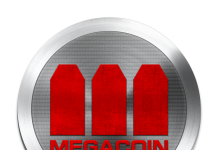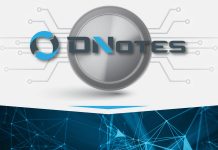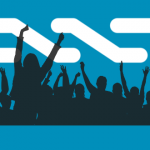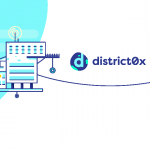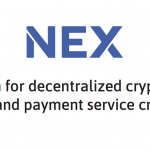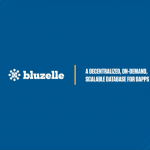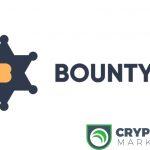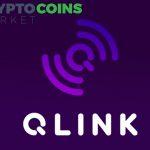DigiByte (Code: DGB) is an open source cryptocurrency running on the DigiByte Blockchain, a decentralized international blockchain created in 2013 with a focus on cyber security, payments & secure communications. The DigiByte Blockchain is a transparent global ledger used in many industries and applications. As cyber threats continue to exponentially increase DigiByte is focused on cutting edge blockchain security applications.
The name ‘DigiByte’ was chosen in the hopes of future reference to it being akin in concept to a ‘megabyte’ or ‘gigabyte’ but for a digital currency. Although based on Bitcoin, adjustments in the code allow for improved functionality, including 15-second block time and improved security. It is the longest public blockchain in existence.
DigiByte coin was released in January 2014, with little to no fanfare. The currency started trading at low satoshi levels and soon rose in value upon the creation of the “Digishield” – an advanced alternative to the “Kimoto Gravity Well’ (KGW) system, which is used by Dogecoin, and many other Scrypt PoW coins.
These systems are used to protect the currencies from rapid inflation due to mining pools, with high hash rates, attempting to exploit low difficulties. The algorithms do this by simply re-targeting the difficulties much more frequently than was possible before. In the case of Dogecoin and DigiByte, this is done every 60 seconds. Hence, the implementation of Digishield has helped to ensure that the fluctuations on exchanges are attributed to the natural rise and fall of mining hash rates, rather than pump and dump maneuvers orchestrated by shrewd investors.
DigiByte has been credited by many alt coins’ communities for having a team of very adept developers, that truly work in the best interests of its community. These developers keep a mostly silent presence on social media, as compared to other young alt coins, but are obviously working very hard to improve their currency, and support its users.
Soft fork
In April 2017 DigiByte became the second major cryptocurrency blockchain (following Groestlcoin) to implement Segregated Witness (SegWit) via the DigiSync soft fork. The technical milestone laid the foundation for implementation of the Lightning Network and cross chain transactions and atomic swaps.
Hard forks
DigiShield
Activated in February of 2014 this hard fork allowed for the DigiByte blockchain to protect against multi-pools that mine large numbers of DigiByte at a low difficulty. It achieves this by recalculating block difficulty between each block, allowing for a faster correction when a multi-pool begins or ceases contributing to DigiByte, rather than recalculating once every fortnight as is the case with Bitcoin. Since then DigiShield has been added into a number of other cryptocurrency blockchains such as Dogecoin, Startcoin, Nautiluscoin, and Zcash, with the help of the DigiByte team.
MultiAlgo
Activated in September of 2014 from Myriadcoin source code, this hard fork allowed for multi-algorithm mining. Its purpose was to create a number of different proof of work (POW) mining methods to accommodate the different types of mining capabilities that exist, such as dedicated ASIC mining, GPU and CPU mining. This allows for a larger number of people to access DigiByte mining pools and therefore it creates a more decentralized blockchain with the coins reaching groups who were unable to mine the coin on its original single-algorithm fork.
MultiShield
Activated in December of 2014, this hard fork worked to activate DigiShield across the new MultiAlgo platform and accomplish the same goals on all five mining pools.
DigiSpeed
Activated in December of 2015 this was a hard fork that focused on making the DigiByte coin transaction speeds faster. Block time was reduced by 50% to 15 seconds and new block propagation code was added with the help of Microsoft.
Specifications and technology
DigiByte opened with a block time of 60 seconds and handling up to 140 transactions per second. Every 2 years the DigiByte blockchain’s dynamic system doubles the number of transactions per second by doubling the block size. In 2017, capability reaches 560 transactions per second, with a maximum capability of 280,000 transactions per second to be reached in 2035.
Platforms.There are 6 platforms for the DigiByte blockchain and currency. These include DigiByteGaming, DigibyteTip, DigiByte Market, DiguSign, Digi-ID and DigiHash.
DigiHash is the developer mining pool. As of June 2017 it supports Sha256, Scrypt, Skein and Qubit. The fees from this pool go to the developers specifically to help support the currency.
DiguSign is a smart contract platform running on the DigiByte blockchain. The technology embeds a secure cryptographic SHA256 hash of a document and embeds it in the DigiByte blockchain, allowing anyone to store, notarize, and validate any document in public in a secure, decentralized manner. Its focus on security has use case studies in sectors such as healthcare, government, legal, trade, finance, insurance and real estate.
DigiByte Gaming is a platform set up by the DigiByte developers on which people play popular games such as League of Legends, Counter-Strike Global Offensive and World of Warcraft and in return receive a number of DigiByte for their performance in game. As of May 2017 DigiByte Gaming has been subject to a DDoS attack and due to this the site became inaccessible.
DigiByte Tip is an online tipping service similar to that integrated into the Dogecoin platform. It allows users to tip each other on popular social media platforms such as reddit, twitch and twitter.
DigiByte vs. Bitcoin
Security: 5 DigiByte mining algorithms vs. 1 Bitcoin algorithm. DigiByte mining is much more decentralized. DigiByte mining algorithms can be changed out in the future to prevent centralization.
Speed: DigiByte transactions occur much faster than Bitcoin transactions. 1-3 second transaction notifications. 15 second DigiByte blocks vs. 10 minute Bitcoin blocks. DigiBytes are confirmed after 1.5 minutes vs. 1 hour with Bitcoin.
Transaction Volume: DigiByte can handle many more transactions per second. Bitcoin can only handle 3-4 transactions per second. It can currently handle 280+ transactions per second. The 2015 DigiSpeed hardfork introduced changes that double the capacity of the network every two years.
Total Supply: More DigiBytes, lower price, more micro transactions, better price stability. 21 billion DigiBytes will be created over 21 years. Only 21 million Bitcoins will be created over 140 years. 1:1000 ratio. 1 Bitcoin for every 1000 DigiBytes.
Flexibility: Ability to quickly add new features. It can add new features & upgrades much quicker than Bitcoin. Future DigiByte upgrades will push transaction limit to several thousand per second.
Marketability & Usability: DigiByte is an easy brand to market to consumers. These coins are much cheaper to acquire. $1 - $10 long-term price target per DigiByte. Send 5 DigiBytes instead of 0.005 Bitcoin.
Common Uses of DigiByte
DigiByte is aiming for the gaming and eSports scene. One goal of DigiByte is to earn DigiByte while playing games like League of Legends and combine this with their gaming hub. Unlike many of other cryptocurrencies, DigiByte is serious about security and fast transactions. Although DigiByte’s trading price is extremely low they are ahead of the game in terms of technology. DigiByte offers its own core wallet which is frequently updated and available on Windows, Mac, Android, and more.
DigiByte (DGB) Token
Overview:
Current coin Value: $0.011047.
Market Cap: $96,571,305.
Circulating Supply 8,742,253,657 DGB.
Max Total Supply: 21 Billion DigiBytes in 21 Years (2035).
Yearly Supply Inflation: 12% in 2017.
Block Reward Reduction: 1% Monthly.
Current Block Reward 891 DGB.
Blockchain Type: Public, Decentralized, UTXO based, Multi-Algorithm.
SegWit Support Yes. First major altcoin to successfully activate SegWit. (April 2017).
Hardforks 4. DigiShield, MultiAlgo, MultiShield, DigiSpeed.
Softforks 3. SegWit, CSV, NVersionBips.
DigiByte was created to be limited in quantity, at a market cap of 21 billion, which is a ratio of 1000:1 when compared to Bitcoin. This number was chosen with the hope that it would ease the integration into merchant payment systems, and create a more liquid currency.
The coins can be mined over 5 different algorithms. These are Sha256 (ASIC friendly), Scrypt (ASIC friendly), Groestl (GPU friendly), Skein (GPU friendly), Qubit (ASIC friendly).
Wallets
• DigiByte Core Windows
• DigiByte Core Mac
• DigiByte Android
• Gaming Wallet
• Chrome Gaming Wallet
• Coinomi Wallet
• Jaxx Wallet
Exchanges
• Poloniex
• Bittrex
• Shapeshift
• Litebit
• Yobit
• Cryptopia
The Future of DigiByte
The future of DigiByte is a bright future for those who got involved early, unlike other coins DigiByte is not a short-term profit scheme. DigiByte is a long-term investment towards a revolutionary technology that can change our day-to-day transactions and how we spend and earn money. The development team and community behind DigiByte is outstandingly active and supportive of their overall mission to create a safer, faster, and more secure method of payment. If you are looking for a relatively low-cost long-term investment with potential then DigiByte is the perfect candidate and has a promising future.
[currencyprice currency1=”dgb” currency2=”usd,eur,btc”]
[currencygraph currency1=”dgb” currency2=”usd”]



